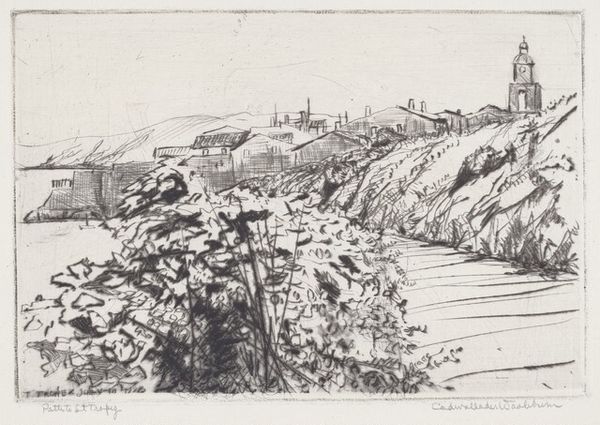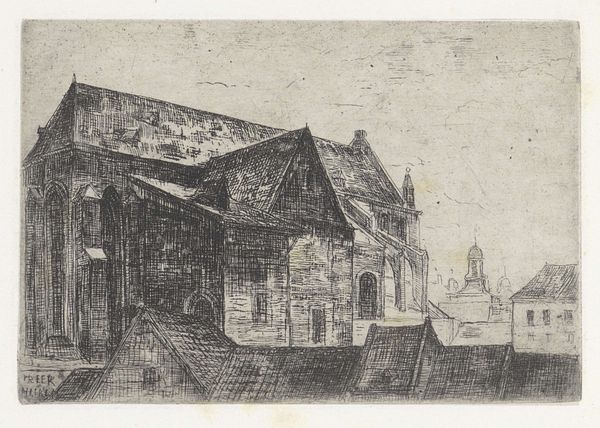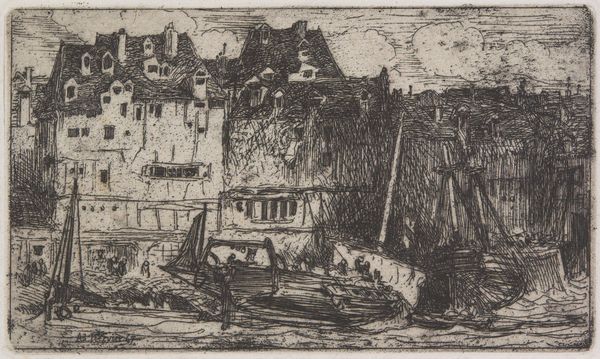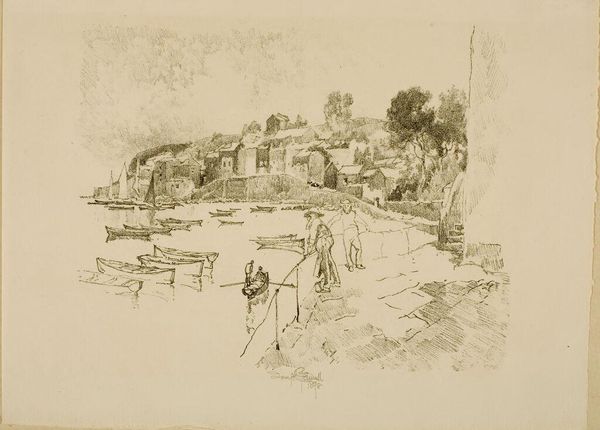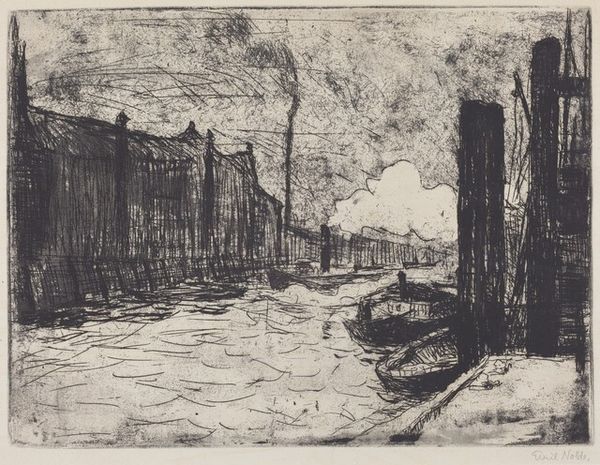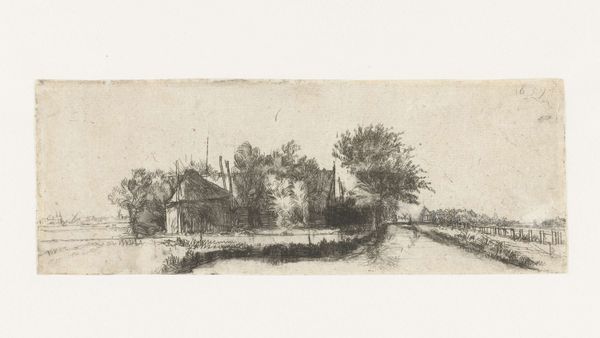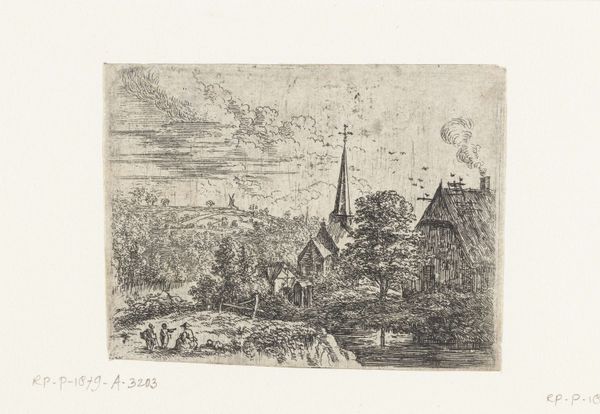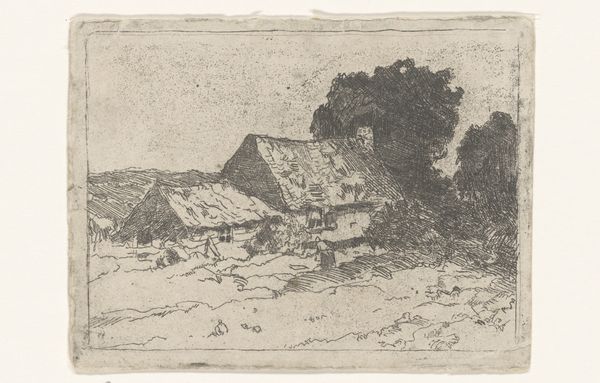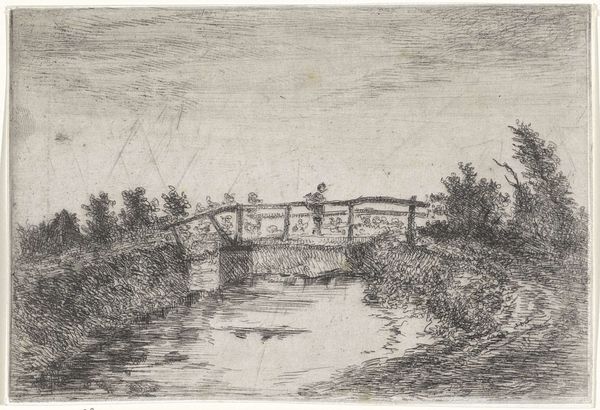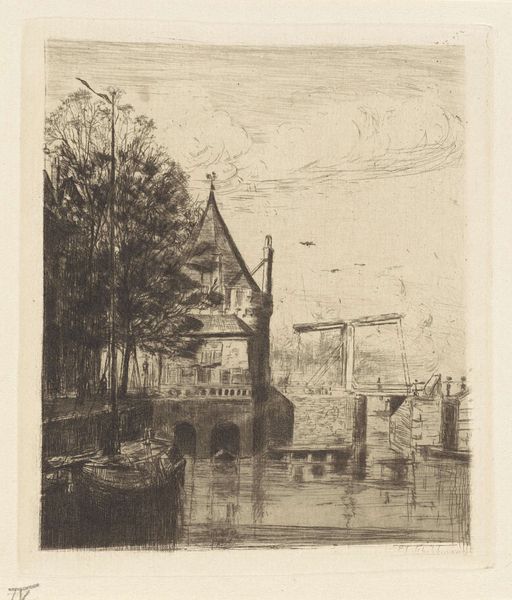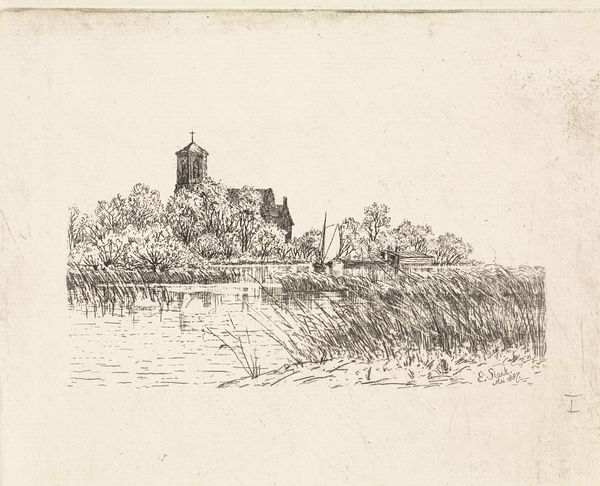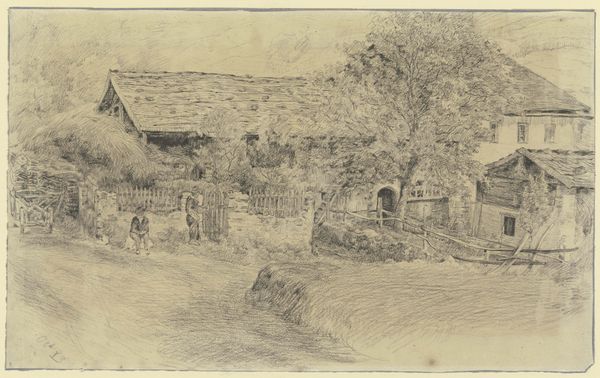
drawing, etching, ink, pencil
#
drawing
#
pen sketch
#
etching
#
pencil sketch
#
landscape
#
ink
#
pencil
#
realism
Dimensions: height 103 mm, width 132 mm
Copyright: Rijks Museum: Open Domain
Arnoud Schaepkens created this etching of a fortress wall and watchman sometime in the 19th century. The etching process begins with a metal plate, likely copper or zinc, coated with a waxy ground. The artist then draws through this ground with a needle, exposing the metal. When the plate is immersed in acid, the exposed lines are bitten, creating grooves. Ink is then applied to the plate, filling these grooves, and the surface is wiped clean. Finally, the plate is pressed against paper, transferring the ink and creating the print. Note the directness of the line, its quality determined by the artist's hand and the biting action of the acid. The image is a result of a collaboration between human skill, chemical process, and mechanical reproduction. This etching sits at the intersection of craft, design, and materiality, revealing the social context of labor and production in artmaking. By attending to these processes, we can fully appreciate the rich layers of meaning embedded within it.
Comments
No comments
Be the first to comment and join the conversation on the ultimate creative platform.
